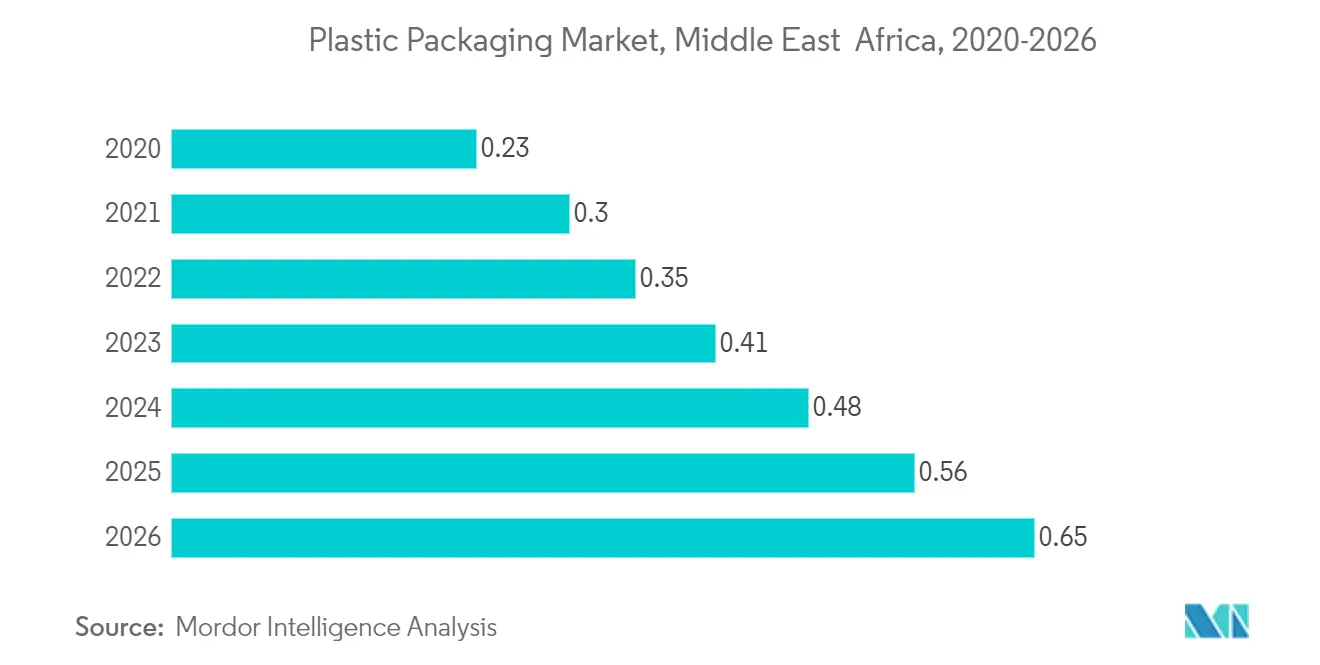Market Trends of MEA Baby Food Packaging Industry
This section covers the major market trends shaping the MEA Baby Food Packaging Market according to our research experts:
Plastic is Expected to Hold the Largest Market Share
- The region is generally hot; baby foods are often stored in pouches or protective packages to reduce the chances of damage and staling. Moreover, they are easy to carry and small pouches which are for one-time use and throw, plastic packagings are cost-effective.
- Protective packaging, such as air pillows and bubble wraps, are expected to hold the prominent share in the forecast period as freight transit often includes rough handling or bumps in the road, thus, creating the imperative need for bubble wraps and air pillows in the baby food packaging industry supply chain forms a sturdy barrier against impact.
- In powder milk formula, the launch of single-serve plastic sachets, for instance, by the Enfamil brand, indicates the busy life of working parents and thus, increases the importance of ready nutrition products.

Saudi Arabia to Hold the Largest Market Share
- Saudi Arabia has a rapidly developing retail sector, and the market for baby food has grown steadily. The demand for baby food in Saudi Arabia has further potential for growth given the increased exposure to Western lifestyles, the underlying strength of the economy. As the baby food segment by volume grew, the packaging market also has seen heights.
- Saudi Arabia is one of the major economies in the Middle East and Africa. Growing disposable income in African countries has led to rising in the affordability of baby food products, which has resulted in improved quality food from the infant stage. The growth of the baby food/formula market is also being driven by the increasing number of migrants settling for employment purposes.
- The rise in the number of working women over the past five years is expected to favor the market for baby food packaging. According to the world bank, the working women population in the country is more than 48% till 2020.
- As the sector of baby food production grew in the region, the packaging market also grew as they are directly proportional. Post COVID-19 parents are preferring healthy, sustainable, eco-friendly, and one-time-use packaging for the safety of their babies and environment.
- Saudi Arabia is one of the largest consumers of plastic products in the GCC region. According to the recent estimates of GPCA, the country has over 95 kg per capita consumption of plastics, making it the largest consumer of plastic products in the entire GCC.
- Strict government targets have been set for annual collection and recycling over the next five years, and the EPR will see investment in collection infrastructure in the country. Any company or brand that makes or imports any form of packaging for distribution in South Africa will be required to pay an extended producer responsibility (EPR) fee per ton from May 2021. This has encouraged vendors to look for alternative packaging solutions such as paper and renewable plastic packaging.


